
Moldavia is a historical region and former principality in Central and Eastern Europe, corresponding to the territory between the Eastern Carpathians and the Dniester River. An initially independent and later autonomous state, it existed from the 14th century to 1859, when it united with Wallachia as the basis of the modern Romanian state; at various times, Moldavia included the regions of Bessarabia, all of Bukovina and Hertsa. The region of Pokuttya was also part of it for a period of time.

The Cathedral of Curtea de Argeș is a Romanian Orthodox cathedral in Curtea de Argeș, Romania. It is located on the grounds of the Curtea de Argeș Monastery, and is dedicated to Dormition of the Mother of God. The building is the seat of the Archdiocese of Argeș and Muscel.

Pylyp Stepanovych Orlyk was a Zaporozhian Cossack starshyna, Hetman in exile, diplomat, secretary and close associate of Hetman Ivan Mazepa. He is the author of the Constitution of Pylyp Orlyk.

Eustratie "the Drunk" Dabija was Prince (Voivode) of Moldavia between 1661 and his death in September 1665.
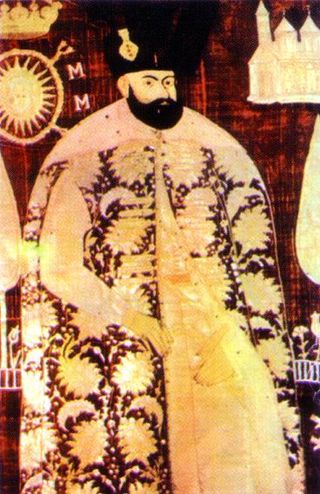
Ieremia Movilă, was a Voivode (Prince) of Moldavia between August 1595 and May 1600, and again between September 1600 and July 10, 1606. At the time, Moldavia was a vassal province of the Ottoman empire.

Radu Mihnea was Voivode (Prince) of Wallachia between September 1601 and March 1602, and again between March and May 1611, September 1611 and August 1616, August 1620 and August 1623, and Voivode (Prince) of Moldavia in 1616–1619, 1623–1626. He was the illegitimate son of Mihnea Turcitul by Voica Bratcul.
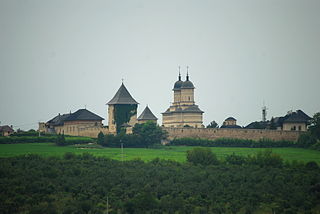
Voivode George Ducas was three times prince of Moldavia, one time prince of Wallachia (1674–1678) and one time Hetman of Ottoman Ukraine (1681-1683).
The Early Modern Times in Romania started after the death of Michael the Brave, who ruled in a personal union, Wallachia, Transylvania, and Moldavia – three principalities in the lands that now form Romania – for three months, in 1600. The three principalities were subjected to the Ottoman Empire, and paid a yearly tribute to the Ottoman Sultans, but they preserved their internal autonomy. In contrast, Dobruja and the Banat were fully incorporated into the Ottoman Empire.

The House of Wiśniowiecki was a Polish-Lithuanian princely family of Ruthenian-Lithuanian origin, notable in the history of the Polish–Lithuanian Commonwealth. They were powerful magnates with estates predominantly in the Ruthenian lands of the Crown of the Kingdom of Poland, and they used the Polish coat of arms of Korybut.

The Polish-Ottoman Wars were a series of conflicts that took place between the Polish-Lithuanian Commonwealth and the Ottoman Empire during the 16th and 17th centuries. These wars were part of the broader struggle for dominance in Eastern Europe between Christian and Muslim powers. The conflicts involved territorial disputes, religious differences, and power struggles in the region.

Sophie was Princess of Albania from 7 March to 3 September 1914 as the wife of Prince Wilhelm. In 1906 she married Wilhelm, second son of the Prince of Wied. When her husband became prince of Albania, Sophie became princess consort. However, in Albania she was referred to as Mbretëreshë, or Queen.

The Khotyn Fortress is a fortification complex located on the right bank of the Dniester River in Khotyn, Chernivtsi Oblast (province) of south - western Ukraine. It is situated on a territory of the historical northern Bessarabia region which was split in 1940 between Ukraine and Moldova. The fortress is also located in a close proximity to another famous defensive structure, the Old Kamianets Castle of Kamianets-Podilskyi. Construction on the current stone Khotyn/Hotin fortress was started in 1375, while major improvements were made in the 1380s and in the 1460s, under the Moldavian princes, Alexander the Good, and Stephen the Great.
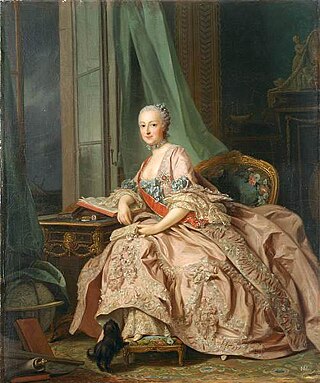
Anastasiya Ivanovna, Hereditary Princess of Hesse-Homburg and Princess Trubetskaya, was a Russian Imperial noblewoman, courtier, Princess of Moldavia and Landgravine of Hesse-Homburg. She was also an honorary member of the Imperial Russian family.

Princess Evdochia of Kiev was a Princess of Kiev by birth, and became Princess consort of Moldavia after her marriage to Prince Stephen III of Moldavia. She was the mother of Elena, Crown Princess of Moscow.

Costea Bucioc or Coste Băcioc was a Moldavian statesman, commander of the military forces, and father-in-law of Prince Lupu (Vasile) Coci. He began his political career in the 1580s, emerging in the late 1590s as an ally of the Movilești dynasty, with then-Prince Ieremia Movilă advancing him to the post of Clucer. From 1601, he was Constantin Movilă's Paharnic, receiving from him the estate of Deleni and other villages around Hârlău, which formed part of a Bucioc domain that also extended into Bukovina and Bessarabia. Together with the Movilești, he became one of the great landowners of his generation, and one of the first Moldavian boyars known to have owned serfs. Some of his assets went into refurbishing Râșca Monastery, of which he was patron, or ktitor.
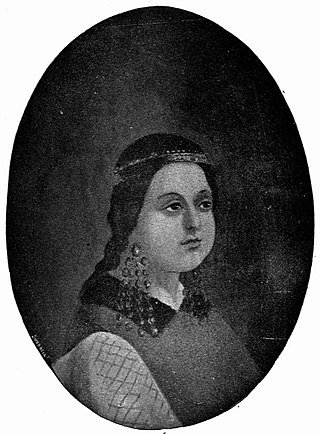
Princess Elena of Moldavia, was a Moldavian Princess, as a daughter of Stephen III, who later became Grand Princess of Moscow as the wife of Ivan the Young.

Anastasiya Dabizha, was a Ukrainian Hetmana by marriage to Ivan Skoropadsky, Hetman of Zaporizhian Host. She acted as the trusted political adviser of her spouse and wielded great influence within the affairs of state, particularly in connection with the foreign policy toward Russia, which was well known and became the subject of a Ukrainian saying.

The House of Soldan was an old noble family in medieval Moldavia. In the 16th and 17th centuries, members of the family assumed important offices within the princely chancellery of the Principality.

Anastasiya Stepanivna Kobzarenko was a Ukrainian director, librarian, and writer. She began her career working as an instructor at the Lykhniv District Department of Culture of the Dnipropetrovsk Region and was librarian of Kryvyi Rih City Library No 4. in Kryvyi Rih, Dnipropetrovsk Oblast between 1955 and 1958. Kobzarenko was also an inspector at the Ministry of Culture of the USSR from 1960 to 1966 and director general of the State Republican Library for Children from the late 1960s to 2013. She authored more than twenty publications on library works and wrote more than 100 articles focusing on the problems faced by libraries. Kobzarenko was a 1998 recipient of the Order of Princess Olga, Third Class and was made a Hero of Ukraine in 2009.
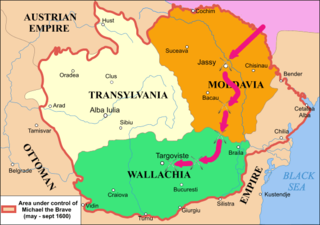
The Moldavian campaign of Tymofiy Khmelnytsky in 1653 was a military campaign in Moldavia and Wallachia by the Cossack-Moldavian army of the voivode Vasyl Lupul and the hetman in charge, Tymofiy Khmelnytsky, against the pretender to the Moldavian throne, George Stefan, and the Wallachian troops of prince Matviy Basarab, supported by mercenaries from Transylvania, Poland, and Serbia. The Cossack-Moldavian army was defeated, and Tymofiy himself was killed, which put an end to Bohdan Khmelnytskyi's attempts to include Moldavia in the sphere of influence of the Zaporozhian Army, as well as to Lupu's attempt to take the throne of Wallachia and his power in Moldavia.




















